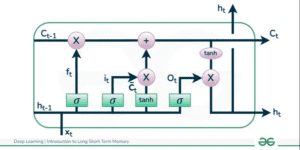The Irony of Artificial Intelligence: Advanced but Flawed
Artificial Intelligence (AI) has been a transformative force, automating processes and offering unprecedented capabilities across Australian industries and government agencies. But here’s the paradox:
Can AI, our most advanced tool, differentiate between what truly matters and what doesn’t?
This challenge—known as the Frame Problem in AI—illustrates how machine learning systems often fail to prioritize relevant factors. Like an artist overwhelmed by infinite paint colors, AI risks creating chaotic splashes instead of masterpieces, choosing the wrong focus while letting brilliance slip away.
Understanding the Frame Problem in AI
What Is the Frame Problem?
The Frame Problem refers to the inherent difficulty AI systems face when sorting through massive datasets and determining which information is relevant for decision-making.
Why does this happen?
AI excels at analyzing large amounts of data but struggles with context, leading to misguided decisions.
A Classical Example of the Frame Problem
Consider a homeowner struggling during a recession:
John, a mid-level employee, was made redundant due to economic downturns. With no job prospects in sight and mounting pressure to meet his mortgage obligations, John reaches out to his bank’s hardship department for temporary relief. The bank relies on an AI-driven credit scoring system to evaluate his case.
Here’s the twist: The system flags John as high risk and downgrades his credit score because he misses the repayment period specified in the relief agreement. The AI interprets this as financial irresponsibility, failing to contextualize the broader economic conditions or the unavoidable nature of his job loss.
The result? John’s creditworthiness suffers, impacting his future opportunities, even though his predicament stemmed from macroeconomic factors beyond his control.
This is a textbook example of the Frame Problem in AI: the system rigidly applies predefined parameters without understanding the situational nuances.
How the Frame Problem Impacts Australia
Why the Frame Problem Matters
The Frame Problem has significant consequences for Australian businesses, government operations, and democracy. Here are three ways this manifests:
- Operational Inefficiencies AI systems often misinterpret priorities, leading to delays or irrelevant outputs. For example, public service algorithms might prioritize outdated metrics, leaving essential data overlooked.
- Biased Outcomes Recruitment tools might focus narrowly on specific keywords, ignoring unconventional brilliance. Similarly, as seen in John’s case, credit-scoring systems penalize individuals for systemic issues rather than personal behavior.
- Privacy Risks AI surveillance can hoard excessive personal data, fixating on noise while missing critical insights. This creates an illusion of safety but increases vulnerability.
Why Australians Should Care About AI Governance
AI decisions impact over 1.5 million Australians annually, shaping everything from healthcare access to job opportunities. The stakes are high:
- The Negative Scenario: AI systems fail to prioritize effectively, amplifying inequalities and inefficiencies.
- The Positive Scenario: With proper governance, AI becomes a tool for ethical, fair, and effective decision-making.
Shape the Future of Ethical AI
The example of John and his mortgage shows that the Frame Problem isn’t just theoretical—it affects real people. By addressing these challenges, we can ensure AI serves humanity rather than hindering it.
Take the first step:
- Read our next article AI and Equality( Click Here)
- Explore tailored consultancy to navigate ethical AI.
- Join our AI-driven training programs to lead the way in responsible AI design.
👉 Let’s act now to build a smarter, fairer future powered by ethical AI.









1 Comment
Your point of view caught my eye and was very interesting. Thanks. I have a question for you.